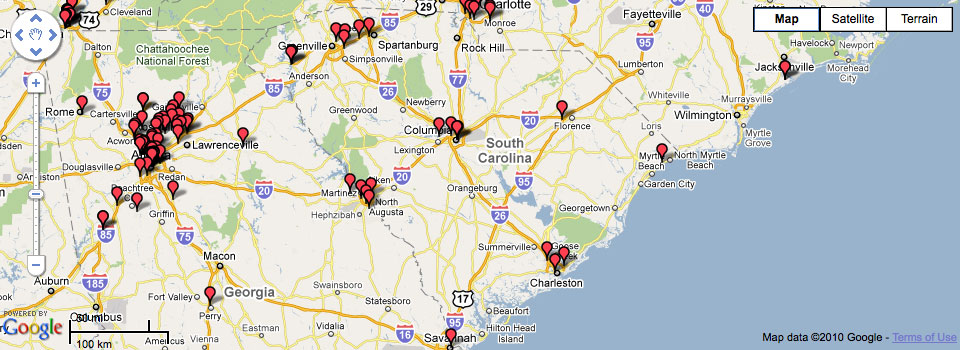If you’ve been playing Gowalla for any length of time, you’ve probably already discovered Ben Dodson’s Gowalla Tools. This companion site for the popular location-based iPhone game features several helper tools for players (like myself) who are trying to collect all the virtual items in the game. Of the tools on the site, the Gowalla Map is by far my favorite. Simply type in your Gowalla username and you can use this Gowalla/Google maps mashup to browse the most recent 100 spots for any given area and even have the app manually remove spots with no items you’re missing with a click of the “Item Finder” button.
The Gowalla Map really is an indispensable tool for item collectors, but if you take the time to zoom out a bit, it also provides some interesting real-time insight into regional and global usage of the game as well. Because the maximum number of spots you can view at one time is limited to 100, you have to zoom in pretty close in some areas to see all of the available spots. Notice at this zoom level in downtown Columbia, SC there are 93 spots shown:

If you zoom any further out, you lose some of the older spots. With that 100 most-recent spot filter in place though, you start to see trends in where the most active spot creation is taking place. Here’s what I get if I look at the greater Columbia area and redraw the map:

Taking this a couple steps further, if you zoom out far enough to see a few states, the larger cities start to stand out on the map. In this next screenshot you can clearly see that Columbia, Charleston & Augusta have far less recently created spots than a big metropolitan city like Atlanta, GA:

As you zoom further and further out, those 100 spots scatter all over the map. When you consider that hundreds of new Gowalla spots are created everyday across the globe, seeing the most-recent 100 spots in the United States may not seem relevant, but many of the same cities have pins every time I redraw the map at this level:

The usefulness of this information goes far beyond a popular LBG. Where there are active Gowalla hot-spots, there are active iPhone users. These pin clusters may only represent a small segment of iPhone users, but if you’re developing anything for the iPhone, it’s certainly something you should keep an eye on.